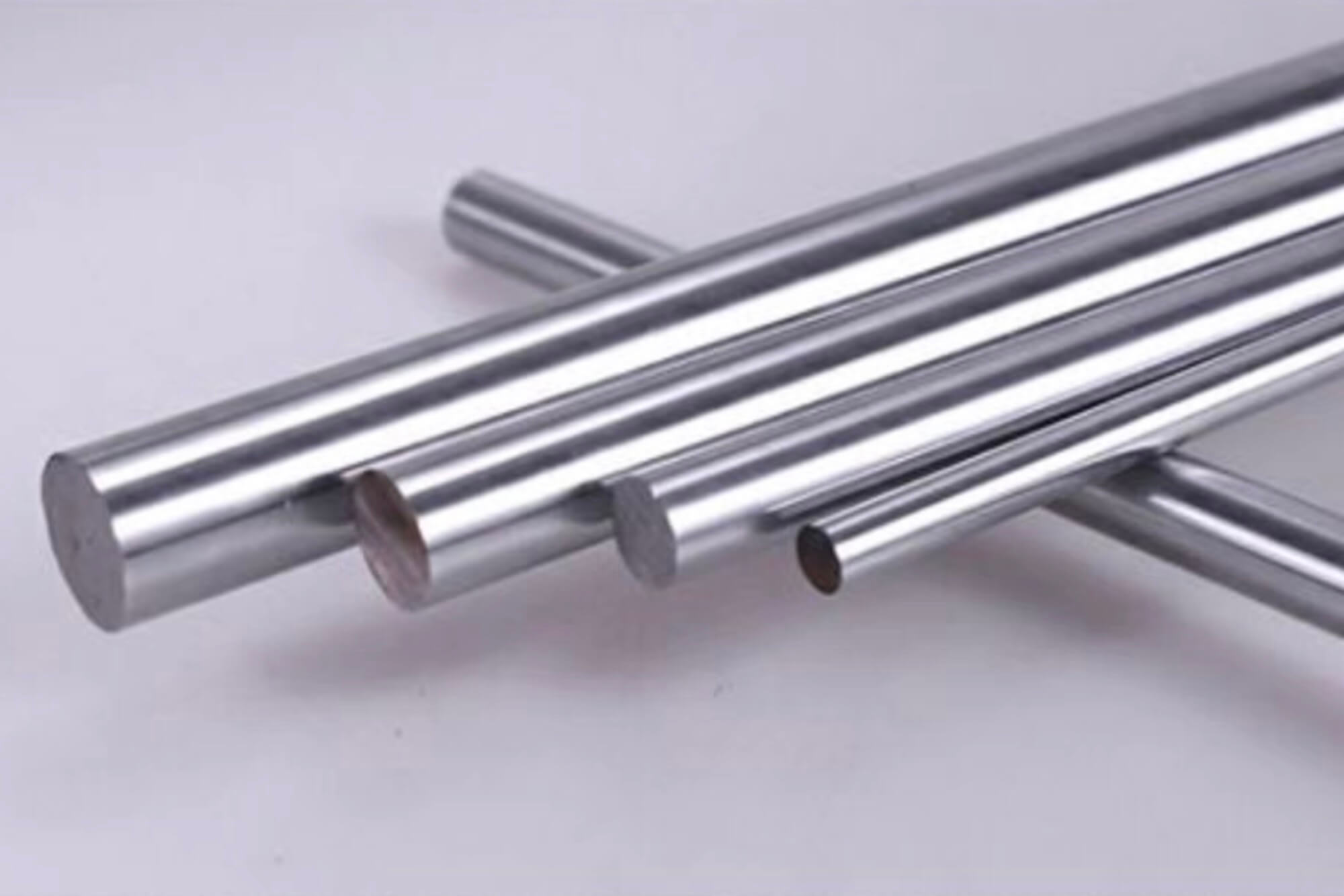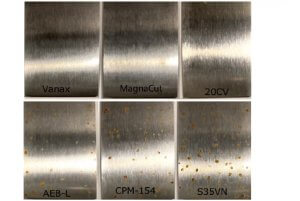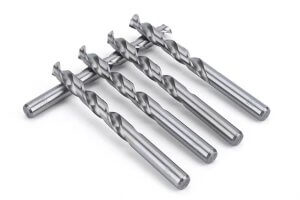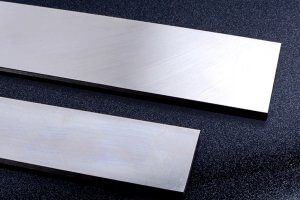Chapter 1: What Is Chrome Metal?
Before diving into CNC machining details, let’s clear up one thing: what exactly is chrome metal? Many people confuse chrome metal with pure chromium. Chrome metal usually refers to metal parts that have been chrome-plated rather than pure chromium itself.
Chrome plating is applying a thin layer of chromium onto the surface of another metal. This process creates a shiny, durable finish with excellent corrosion resistance. Pure chromium, however, is brittle, difficult to machine, and rarely used on its own in practical applications.
In my experience, most parts labeled as chrome metal in the machining world are chrome-plated steel or aluminum components. Here’s a quick overview to help you visualize the differences clearly:
| Feature | Chrome-Plated Metal | Pure Chromium |
|---|---|---|
| Appearance | Shiny, reflective finish | Grayish-white metallic |
| Machinability | Moderate to difficult | Extremely difficult (brittle) |
| Corrosion Resistance | Excellent | Excellent |
| Typical Uses | Decorative and functional coating | Special alloys |
| Common Base Materials | Steel, aluminum, brass | Rarely used alone |
| Cost | Economical | Expensive, specialty use |
From personal experience, when clients request “chrome metal,” they typically mean chrome-plated parts rather than pure chromium.
Chapter 2: Can Chrome Metal Be CNC Machined?
One of the first questions I had when I started working with chrome metal was simple but critical: can it even be machined? The short answer is yes—but with caution.
Chrome metal, specifically chrome-plated surfaces, has a hardness range typically between 66 and 70 HRC (Rockwell scale). This puts it in the realm of some of the hardest materials commonly handled in machining. This hardness directly impacts how effectively and safely chrome metal can be machined.
Early in my machining career, I attempted to machine chrome-plated steel rods without fully appreciating the complexities involved. I quickly realized that traditional machining methods wouldn’t suffice. My tools dulled faster than expected, surface finishes were poor, and in worst cases, the chrome plating itself would peel off.
After consulting with colleagues and researching extensively, I discovered several important factors to consider when machining chrome metal:
Key Considerations for Machining Chrome Metal:
- Tool Selection:
- Carbide and ceramic-coated tools perform significantly better than high-speed steel (HSS).
- Inserts designed specifically for hard materials (such as those for hardened steels) are essential.
- Cutting Parameters:
- Lower cutting speeds (RPM) reduce heat generation.
- Light depth of cut (0.002″-0.005″) minimizes stress on the chrome surface.
- Moderate feed rates prevent excessive tool wear and plating damage.
- Cooling and Lubrication:
- Using high-quality coolant to reduce heat and improve chip removal is crucial.
- In my experience, synthetic coolants offer superior heat control and cleanliness compared to traditional oils.
Here’s a practical table outlining optimal machining parameters based on my experience with chrome metal:
| Parameter | Recommended Value (Chrome-Plated Parts) |
|---|---|
| Cutting Tool Material | Carbide or ceramic-coated carbide inserts |
| Cutting Speed (SFM) | 40–60 surface feet per minute |
| Feed Rate | 0.001″–0.003″ per revolution |
| Depth of Cut | 0.002″–0.005″ |
| Coolant | High-quality synthetic coolant |
| Tool Geometry | Negative rake, rounded edge geometry |
I also learned the importance of careful inspection between passes. Inspecting after each machining pass helped me avoid costly mistakes. If the chrome plating starts showing signs of chipping or peeling, it typically indicates an issue with either tool condition, parameters, or coolant application.
Practical Insights from Personal Experience
In one memorable project, I was tasked with machining hydraulic piston rods with hard chrome plating. My initial attempts resulted in severe plating damage. Frustrated, I consulted an experienced machinist who advised me to significantly lower my cutting speed and use specialized ceramic-coated carbide inserts. I immediately saw an improvement: the chrome plating remained intact, the finish improved greatly, and tool life nearly doubled.
Conclusion and Takeaway
So, yes, chrome metal can indeed be machined. The key lies in adjusting your machining strategy—careful tool selection, reduced speeds, moderate feeds, and meticulous cooling. With these adjustments, you’ll consistently achieve excellent results.
Chapter 3: Challenges of Machining Chrome Metal
Working extensively with chrome metal has taught me that every advantage—its hardness, corrosion resistance, and aesthetics—also introduces certain machining challenges. Let me share the main obstacles I’ve faced and the practical methods I used to overcome them.
1. Tool Wear
Chrome plating is notoriously abrasive. Even carbide tools dull rapidly, especially when machining thick chrome layers or applying incorrect parameters.
My Practical Solution:
I shifted exclusively to high-performance carbide inserts specifically coated for hard turning. Inserts coated with AlTiN (Aluminum Titanium Nitride) or TiAlN provided the best results. Additionally, rotating inserts more frequently helped maintain cutting-edge sharpness and finish quality.
2. Surface Flaking and Chipping
Chrome plating adhesion can vary, and excessive pressure or improper cutting angles often cause it to flake or chip.
How I Avoided This Issue:
Initially, I struggled with plating delamination. By trial and error, I found that shallow cutting depths (0.002″–0.003″) and a gentle entry angle significantly reduced surface damage. I also learned to inspect each batch of plated material carefully—if adhesion seemed questionable, adjustments were made immediately to avoid batch losses.
3. Heat Generation and Management
Machining chrome metal generates considerable heat, risking both tool damage and plating separation due to thermal expansion mismatch.
Lessons Learned in Cooling:
Early on, I underestimated the role of coolant. A colleague recommended a synthetic coolant specifically designed for hard machining applications. After making this change, heat-related problems decreased noticeably, and tool life dramatically improved.
4. Dimensional Control Challenges
Because chrome plating thickness can vary (typically between 0.0002″ to 0.002″), achieving tight dimensional tolerances can be challenging.
Best Practice in Dimensional Control:
From experience, machining dimensions slightly undersized before plating allowed precise control. I established a standard tolerance allowance based on expected chrome plating thickness, ensuring the final plated dimension consistently matched specifications.
Below is a reference table I use for tolerance planning in chrome plating projects:
| Desired Final Thickness | Pre-Machining Dimension Allowance |
|---|---|
| 0.0005″ | -0.0005″ to -0.0007″ |
| 0.0010″ | -0.0010″ to -0.0012″ |
| 0.0015″ | -0.0015″ to -0.0017″ |
| 0.0020″ | -0.0020″ to -0.0022″ |
Personal Reflections and Lessons Learned
Dealing with chrome metal forced me to improve my machining strategy comprehensively. Initially, mistakes cost time, money, and materials. However, each problem provided valuable learning. Over time, I mastered a balanced approach to tooling, cutting parameters, cooling, and dimensional planning, turning initial headaches into a manageable, routine process.
Conclusion and Key Takeaways
Understanding and overcoming these challenges is essential for successful machining of chrome metal. Adjustments in tooling, careful handling, thoughtful dimensioning, and proper cooling significantly reduce risk, improve efficiency, and ensure high-quality outcomes.
Chapter 4: Machining Before or After Chrome Plating?
One critical decision in working with chrome metal involves deciding when to perform machining—before or after chrome plating. I’ve explored both methods extensively, and each has specific advantages and challenges depending on the part’s purpose and the precision required.
Machining Before Chrome Plating
In most scenarios, machining before plating is generally the best practice. The primary benefit here is improved dimensional accuracy. Since chrome plating thickness varies, precisely controlling final dimensions becomes more predictable if machining is done first.
For example, I worked extensively with hydraulic cylinder shafts, which demanded exceptionally tight tolerances. Machining these shafts prior to plating allowed me to precisely control the base metal dimensions. After plating, the parts consistently met exact specifications.
Advantages of Machining Before Plating:
- Easier to maintain precise dimensional tolerances.
- Chrome plating adheres better to freshly machined, clean surfaces.
- Reduced risk of flaking during subsequent handling.
However, careful planning is essential. Allowances must be accurately set to compensate for plating thickness. Here’s a helpful reference table based on my shop experiences:
| Target Chrome Thickness | Machining Allowance (Reduction) |
|---|---|
| 0.0003″–0.0005″ | 0.0004″–0.0006″ undersize |
| 0.0006″–0.0010″ | 0.0008″–0.0012″ undersize |
| 0.0011″–0.0020″ | 0.0014″–0.0022″ undersize |
I always advise my team to carefully confirm plating thickness tolerances with our plating supplier beforehand. This extra step has prevented numerous costly reworks.
Machining After Chrome Plating
There are situations, however, when machining after chrome plating becomes necessary. This might happen when a part is repaired, modified, or when precise surface finish adjustments are required post-plating. However, this approach demands great care and precision.
One project stands out vividly: a client sent chrome-plated automotive rods that needed minor dimension adjustments after plating. My initial attempt resulted in chrome chipping due to aggressive machining. After slowing the speed and decreasing the depth of cut dramatically, the results improved significantly.
Advantages of Machining After Plating:
- Ideal for minor dimensional corrections.
- Can enhance final surface smoothness and appearance.
- Suitable for repair or rework scenarios.
Challenges and How to Handle Them:
- Chrome plating hardness requires specialized carbide tooling and extremely gentle cuts.
- Constant inspection is critical—immediately halting machining at the first sign of peeling or chipping.
Here’s a comparison table summarizing practical insights from my projects:
| Aspect | Machining Before Plating | Machining After Plating |
|---|---|---|
| Dimensional Precision | Easier to control | Harder, risk of plating damage |
| Surface Finish Control | Less critical (pre-plating) | Can precisely refine surface |
| Tool Life | Generally better | Significantly reduced |
| Risk of Flaking/Peeling | Low | High |
| Recommended Applications | General manufacturing | Repair, minor refinements |
Personal Experience Summary:
I strongly prefer machining prior to plating. It’s predictable, less risky, and economically efficient. Machining after plating is viable but requires caution, making it suitable only for minor refinements or rework scenarios.
Chapter 5: Materials Commonly Chrome-Plated and Machined
Understanding the best materials to pair with chrome plating can significantly impact your machining workflow and outcomes. Throughout my machining career, I’ve extensively worked with various substrates, each bringing unique challenges and advantages. Here’s an overview of the common materials, their suitability for chrome plating, and tips based on my practical experience.
Steel (Carbon and Alloy Steels)
Steel is by far the most common and easiest substrate for chrome plating. Its mechanical strength, durability, and compatibility with chrome plating make it ideal for many industrial applications.
- Benefits: Excellent adhesion, high strength, relatively economical.
- Challenges: Corrosion risk prior to plating; careful cleaning and preparation required.
- Best Practices: Thoroughly degrease and pre-polish to ensure optimal plating adhesion.
Stainless Steel
Chrome plating stainless steel might seem redundant, given stainless steel’s inherent corrosion resistance. However, it’s commonly used for enhanced surface hardness and decorative purposes.
- Benefits: Enhanced aesthetics, additional surface hardness.
- Challenges: Adhesion issues due to chromium oxide layer on stainless steel surface.
- Best Practices: Specialized pre-treatment methods (acid baths or blasting) ensure proper adhesion.
Aluminum and Aluminum Alloys
Aluminum can indeed be chrome-plated, but it requires additional preparation like zincating to ensure plating adherence.
- Benefits: Lightweight, aesthetic appearance after plating.
- Challenges: Requires extensive pre-treatment; risk of plating peeling without zincating.
- Best Practices: Always use a reputable plating partner experienced with aluminum substrates.
Brass and Copper
Brass and copper are popular choices for decorative chrome plating. Their smooth surfaces provide excellent aesthetic outcomes.
- Benefits: Easy machining, attractive finish.
- Challenges: Softer metals require gentle handling to avoid deformation.
- Best Practices: Use sharp tools and moderate machining speeds to maintain part integrity.
Plastics (ABS, Polycarbonate)
Certain plastics can be chrome-plated, primarily for decorative purposes. However, these are rarely machined afterward due to the fragility of the plating.
- Benefits: Cost-effective for decorative uses.
- Challenges: Limited durability and poor machining properties post-plating.
- Best Practices: Machining plastic components completely before plating.
Here’s a practical comparison based on my hands-on experience with each substrate:
| Material | Plating Difficulty | Machinability (Pre-plating) | Post-plating Machining Viability |
|---|---|---|---|
| Steel | Easy | Excellent | Limited (surface refinement) |
| Stainless Steel | Moderate | Good | Limited (surface refinement) |
| Aluminum | Moderate/Difficult | Excellent | Not recommended |
| Brass/Copper | Easy | Excellent | Limited (cosmetic refinements) |
| Plastics | Moderate | Easy | Generally not practical |
My Personal Recommendation:
For most CNC machining and chrome plating projects, steel remains the best all-around choice. It’s robust, machinable, and bonds excellently with chrome plating, consistently delivering high-quality, reliable results.
Chapter 6: CNC Machining Workflows for Chrome Parts
When I first started machining chrome metal components, one of my biggest hurdles was establishing a clear workflow. Over time, I’ve developed a structured approach that’s helped me consistently produce high-quality, precision chrome-plated parts. I’ll walk you through each step clearly and practically.
Step 1: Design and Material Selection
The first step in machining chrome metal is careful design consideration. Chrome plating thickness, typically ranging from 0.0002″ to 0.002″, must be precisely accounted for in the design stage. Selecting the appropriate base metal—usually steel or aluminum—is critical.
When designing parts for chrome plating, I always leave a machining allowance to accommodate plating thickness. For example, if I need a finished diameter of exactly 1.000″, I’ll machine the part slightly smaller, around 0.998″, accounting for plating buildup.
Step 2: Pre-Machining (Initial CNC Machining)
This step involves precision CNC machining of the chosen base material to a carefully calculated dimension. Based on personal experience, ensuring accurate dimensional allowances at this stage drastically simplifies later processes.
I prefer using CNC turning and milling for pre-machining chrome-plated parts due to the precision they offer. I focus on maintaining smooth finishes and exact dimensions to facilitate superior plating adhesion later.
Step 3: Surface Preparation and Cleaning
Proper surface preparation is crucial. I’ve personally seen plating fail due to inadequate cleaning, which leads to costly rework. Typically, parts undergo degreasing, polishing, or blasting to remove impurities and ensure strong adhesion.
Here’s my standard pre-plating cleaning checklist:
- Degreasing bath (solvent-based)
- Ultrasonic cleaning (removal of microscopic debris)
- Light abrasive blasting or polishing (to enhance surface bonding)
- Final rinse in distilled water
Step 4: Chrome Plating Process
After thorough cleaning, parts undergo chrome plating. I always select trusted plating providers experienced in industrial-quality plating. Communicating clearly with the plating provider regarding thickness, surface requirements, and tolerances significantly improves results.
A typical chrome-plating process I specify to plating vendors includes:
| Step | Description | Typical Duration |
|---|---|---|
| Pre-cleaning baths | Degreasing and acid activation | 10–20 min |
| Base coating | Nickel or copper layer | 15–30 min |
| Chromium deposition | Chrome plating (electrochemical) | 30–60 min |
| Post-plating rinse | Final rinsing and drying | 10–20 min |
| Inspection | Thickness measurement, adhesion check | 5–15 min |
Step 5: Inspection and Quality Control (Post-Plating)
Post-plating inspection is essential for consistent quality. At this stage, I carefully inspect for:
- Plating thickness accuracy (micrometer checks)
- Surface uniformity (visual inspections, surface roughness measurements)
- Adhesion strength (tape tests, micro-abrasion tests)
Step 6: Post-Plating CNC Machining (If Necessary)
Ideally, machining after plating is minimal. However, minor surface refinement or dimensional adjustments occasionally occur. If machining post-plating is necessary, I strongly recommend:
- Carbide inserts designed for hard turning
- Minimal depth of cut (0.001″–0.003″)
- Slow cutting speeds and gentle feeds
I frequently caution teams to carefully monitor the machining process at this stage to prevent any plating damage.
Workflow Summary from My Experience:
My machining workflow for chrome metal consistently follows these stages:
- Design for plating allowance
- Precise pre-machining (CNC turning/milling)
- Meticulous surface preparation and cleaning
- Reliable chrome plating
- Rigorous post-plating inspection
- Careful post-plating machining (if required)
This structured workflow minimizes errors, ensures consistency, and significantly improves overall project efficiency.
Chapter 7: Alternative Surface Finishes to Chrome
While chrome metal remains highly popular due to its aesthetics and durability, it’s important to understand available alternatives. I’ve personally explored various surface treatments when chrome plating wasn’t feasible or necessary.
Nickel Plating
Nickel plating is often my go-to alternative, especially when cost savings matter. Nickel offers moderate hardness, good corrosion resistance, and an attractive finish. Unlike chrome plating, nickel plating is easier to machine after application due to lower surface hardness.
- Benefits: Lower cost, good corrosion resistance, easier post-machining
- Typical uses: Industrial fittings, decorative hardware, electrical components
Anodizing (for Aluminum)
Anodizing is a practical alternative to chrome plating specifically for aluminum. It creates a durable oxide coating providing good corrosion resistance and aesthetic appeal.
- Benefits: Cost-effective, excellent color variety, corrosion resistance
- Typical uses: Automotive trim, aerospace components, decorative hardware
Powder Coating
I often suggest powder coating to clients who prioritize corrosion resistance and aesthetics at a lower cost. Powder coating applies a durable protective layer that’s available in countless colors and finishes.
- Benefits: Cost-effective, environmentally friendly, good durability
- Typical uses: Industrial equipment, consumer products, automotive parts
Hardcoat Anodizing
For higher durability requirements on aluminum, hardcoat anodizing is extremely effective. It significantly enhances surface hardness and wear resistance, though typically provides fewer decorative options compared to chrome.
- Benefits: Excellent wear resistance, corrosion resistance, hardness
- Typical uses: Hydraulic components, aerospace fittings, firearm components
Here’s a practical comparison chart from my projects:
| Surface Finish | Hardness | Machinability (Post-process) | Cost | Durability |
|---|---|---|---|---|
| Chrome Plating | Very High | Difficult | Moderate | Excellent |
| Nickel Plating | Moderate | Easier | Lower | Good |
| Anodizing | Moderate | Moderate | Low | Good |
| Powder Coating | Moderate | Moderate | Lowest | Good |
| Hardcoat Anodizing | High | Difficult | Moderate | Excellent |
Personal Insights:
From experience, chrome plating is superior for demanding applications requiring maximum durability and aesthetic appeal. However, alternatives like nickel plating or anodizing offer practical solutions where cost or specific material compatibility is a priority.
Chapter 8: What Services Should You Look for in a Chrome CNC Supplier?
Choosing the right CNC machining supplier for chrome metal projects can significantly impact the quality, cost, and success of your products. Over the years, I’ve encountered both exceptional suppliers and those whose shortcomings taught me valuable lessons. From this experience, I’ve identified key attributes that every reliable chrome CNC supplier must possess.
Integrated Machining and Plating Services
When I first started outsourcing chrome metal projects, I often separated machining and plating processes between different suppliers. This arrangement, while initially seeming cost-effective, quickly showed its drawbacks. Miscommunication, delays, and accountability issues frequently arose.
Today, I always advise clients to select a supplier offering integrated machining and chrome plating services. Integrated suppliers handle machining, surface preparation, plating, and final inspections all under one roof, significantly reducing turnaround times and miscommunication risks.
Proven Expertise in Chrome Metal Projects
Working with chrome metal demands expertise. I’ve learned firsthand that experience truly counts. A supplier lacking specific chrome metal experience often overlooks essential details, resulting in plating defects, incorrect tolerances, or damaged parts.
Always inquire about a supplier’s track record with chrome-plated components. Request references or previous project examples. During site visits, I personally look for signs such as dedicated chrome plating equipment, specialized inspection tools, and knowledgeable staff who understand chrome plating intricacies.
Clear and Accurate Tolerance Guarantees
Dimensional precision is critical with chrome metal parts, primarily due to plating thickness variations. My most challenging experiences arose from suppliers who vaguely promised tolerances without delivering measurable accuracy.
Reliable chrome CNC suppliers provide explicit guarantees for dimensional accuracy and plating thickness. They should readily offer inspection reports and documentation demonstrating their ability to consistently meet specified tolerances.
Here’s a checklist I developed to evaluate potential suppliers’ capabilities:
| Criterion | Ideal Supplier Attributes |
|---|---|
| Integrated Services | Machining and plating offered together |
| Chrome Expertise | Proven experience, customer references available |
| Dimensional Guarantees | Clearly defined tolerances, documented accuracy |
| Equipment | Advanced CNC machines, plating facilities onsite |
| Quality Control Procedures | Thorough inspections, ISO or industry certifications |
| Customer Communication | Regular updates, responsive and knowledgeable staff |
| Sample Availability | Willingness to provide samples or pilot runs |
Strong Quality Control and Inspection Practices
In my experience, successful chrome CNC suppliers consistently demonstrate robust quality control. They utilize equipment like Coordinate Measuring Machines (CMM), micrometers, and surface roughness testers. Good suppliers also document their QC processes thoroughly, providing inspection reports and certifications when requested.
Excellent Communication and Transparency
Reliable suppliers keep you informed throughout the machining and plating processes. My most positive supplier relationships have always featured transparent, frequent communication about project status, issues, and timelines.
Ability to Provide Samples or Prototypes
Finally, a good supplier should be willing to provide samples or prototypes, especially for critical or complex chrome metal components. This practice allows you to verify the supplier’s capabilities and adherence to specifications before committing to larger production volumes.
Personal Recommendation:
When choosing a chrome CNC supplier, consider not only cost but also these critical attributes. An integrated, experienced, communicative supplier saves time, reduces risk, and consistently delivers high-quality chrome metal components.
Chapter 9: Case Studies or Applications
To illustrate practical insights from working with chrome metal, I’d like to share two real-world case studies from my personal experience. These projects demonstrate both the challenges and rewards of successfully machining chrome metal components.
Case Study 1: Chrome-Plated Hydraulic Cylinder Rods
Several years ago, I managed a large project producing chrome-plated hydraulic cylinder rods for industrial machinery. These rods required precise dimensional tolerances, exceptional corrosion resistance, and surface hardness.
Project Challenges:
- Extremely tight diameter tolerance (±0.0005″)
- Chrome plating thickness accuracy
- High-volume production with short lead time
My Machining Strategy:
- Pre-machined rods undersized by precisely 0.0010″ to accommodate chrome plating.
- Worked closely with a reliable integrated plating provider to ensure consistent plating thickness (0.0005″).
- Implemented rigorous inspection using micrometers and CMM to confirm dimensions and plating thickness after completion.
Results and Lessons Learned:
The rods consistently met all dimensional requirements. Client feedback was exceptionally positive, noting improved cylinder longevity and performance. I learned the value of integrating machining and plating services, careful pre-machining allowances, and meticulous inspection practices.
Case Study 2: Chrome-Plated Automotive Trim Components
Another memorable project involved decorative chrome-plated aluminum automotive trim components. The client demanded visually flawless parts with superior surface finish and consistent dimensions.
Project Challenges:
- Achieving perfect surface finish suitable for decorative chrome plating.
- Ensuring plating adherence on aluminum substrates.
- Managing high aesthetic standards.
Machining and Plating Approach:
- Used high-quality aluminum alloys suitable for plating.
- Pre-machined components carefully polished and cleaned.
- Partnered with a plating provider specialized in decorative chrome plating on aluminum (including zincating and copper-nickel undercoat layers).
Project Outcome:
Initially, several components suffered plating adherence issues due to inadequate surface preparation. I quickly adjusted by improving the pre-treatment steps, resolving all adherence problems. The final parts achieved an exceptional aesthetic finish and dimensional accuracy, earning high praise from the automotive client.
Summary of Lessons Learned in Chrome Machining Applications:
From both projects, these key insights emerged clearly:
- Successful chrome metal machining relies heavily on precise pre-machining dimensional allowances.
- Surface preparation before plating critically influences plating adhesion and quality.
- Partnering with experienced, integrated chrome plating suppliers significantly enhances results and project efficiency.
Sharing these practical experiences helps illustrate the real-world challenges and proven solutions involved in chrome metal machining, underscoring the importance of careful planning, expert collaboration, and rigorous quality control.
FAQ
- What exactly is chrome metal?
Chrome metal usually refers to chrome-plated metal, not pure chromium. - Can chrome-plated parts be machined?
Yes, carefully, to avoid damaging the chrome surface. - Is machining better before or after plating?
Usually before plating, with minor refinements afterward if necessary. - Will machining damage chrome plating?
Aggressive machining can, but careful techniques minimize this risk. - What metals are commonly chrome-plated?
Steel, aluminum, brass, and copper. - Can chrome-plated parts be re-machined or repaired?
Yes, but careful, shallow machining passes are required. - What tooling is best for machining chrome surfaces?
Carbide or ceramic-coated tools are highly recommended. - How hard is the chrome plating layer?
Typically 66-70 HRC, extremely hard. - Why does chrome plating peel during machining?
Usually due to aggressive machining or improper surface preparation. - Is chrome plating purely decorative?
It’s both decorative and functional (protective). - Can aluminum be chrome-plated and machined?
Yes, with proper surface treatments like zincating. - How do I set tolerances for chrome-plated parts?
Allow for chrome thickness in initial machining dimensions. - What industries use chrome plating and CNC machining?
Automotive, hydraulics, aerospace, and consumer products. - Does chrome plating affect part accuracy?
Slightly; plating thickness must be accounted for in tolerances. - What’s the difference between hard and decorative chrome?
Hard chrome is thicker and more durable; decorative chrome is thinner.
Authoritative Resources on Chrome Metal and CNC Machining
- Chrome Plating – Wikipedia
A comprehensive overview of chrome plating, detailing its processes, applications, and variations such as decorative and hard chrome plating.
🔗 https://en.wikipedia.org/wiki/Chrome_plating - Electroplating Explained – Explain That Stuff
An accessible explanation of the electroplating process, including how chrome plating works and its practical applications.
🔗 https://www.explainthatstuff.com/electroplating.html - Chromium Plating – ScienceDirect Topics
An in-depth technical resource covering the chemistry, methods, and industrial applications of chromium plating.
🔗 https://www.sciencedirect.com/topics/engineering/chromium-plating - Electroplating – Wikipedia
Provides a detailed explanation of the electroplating process, including the principles behind depositing metal coatings like chromium onto substrates.
🔗 https://en.wikipedia.org/wiki/Electroplating - Hexavalent Chromium – Wikipedia
Discusses the properties, applications, and health considerations associated with hexavalent chromium, a compound commonly used in chrome plating.
🔗 https://en.wikipedia.org/wiki/Hexavalent_chromium - How Iron and Steel Work – HowStuffWorks
Explores various methods of protecting iron and steel from corrosion, including chrome plating, and explains the underlying science.
🔗 https://science.howstuffworks.com/iron.htm
Other Articles You Might Enjoy
- 3 Effective Ways to Remove Chrome Plating from Metal
remove chrome plating from metal
- The Perfect Synergy Between Chrome Plating Cast Iron and CNC Machining
In the realm of industrial manufacturing, the integration of CNC machining and chrome plating on cast iron components stands as a pivotal advancement, driving quality, precision, and durability to new…
- Powder Coating Cost Calculator Guide: Estimating Jobs by Size, Shape, and Volume
Introduction: Why Accurate Powder Coating Cost Estimation Matters When I first started exploring powder coating as an option for metal finishing, I underestimated how important accurate cost estimation really was.…
- Glass Bead Blasting Material and Its Impact on CNC Machining Performance
In the world of CNC machining, precision, quality, and surface finish are critical factors, especially for industries that demand high-performance components. Among the various surface finishing techniques used to improve…
- Surface Treatment After CNC Machining Applications of the Anodized Aluminum Colors Chart
In the world of manufacturing, CNC machining is a cornerstone of precision and efficiency, especially when it comes to working with aluminum. However, the journey of a part doesn’t end…
- Clear Anodized Aluminum Explained: Material Benefits, Use Cases and Buying Tips
Introduction When I first came across clear anodized aluminum, I was designing a custom electronics enclosure for a client in the industrial automation field. They wanted something lightweight, durable, and…
- CNC Machining of Hardened Metals: Techniques for Ensuring Quality and Precision?
Introduction to CNC Machining CNC machining, also known as Computer Numerical Control machining, is a pivotal component within the manufacturing industry. This highly automated process leverages computer software and machinery…
- Thinking of Using Satin Anodized Aluminum for CNC Parts
What Exactly Is Satin Anodized Aluminum, and Why Might You Choose It? I’ve worked with aluminum in a lot of projects—some industrial, some purely cosmetic. Over time, I’ve come to…






